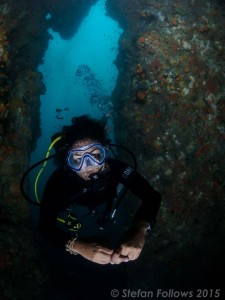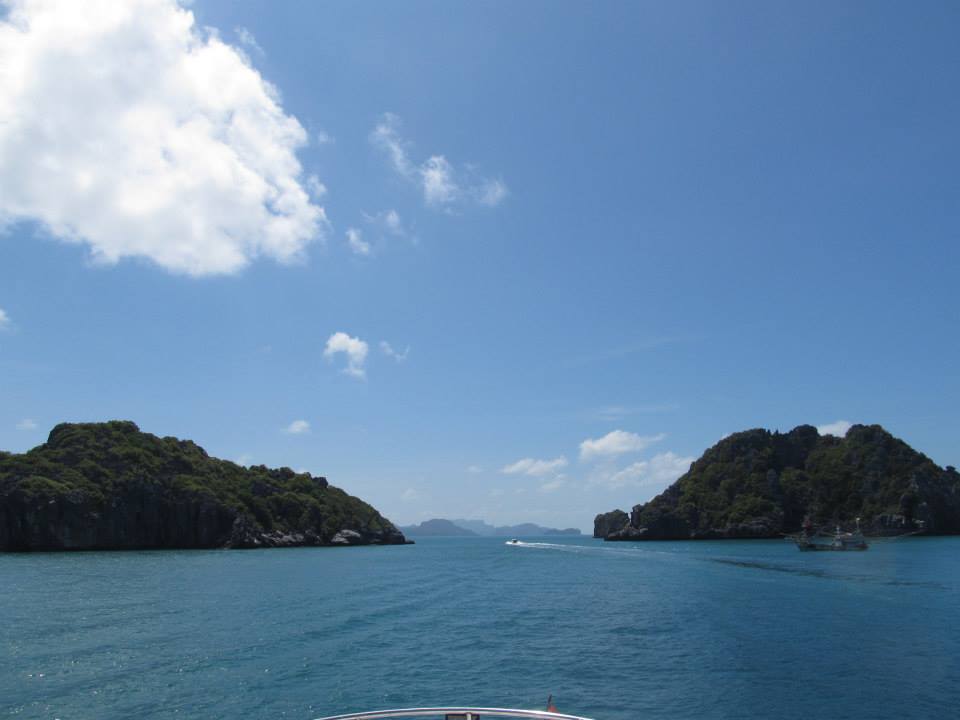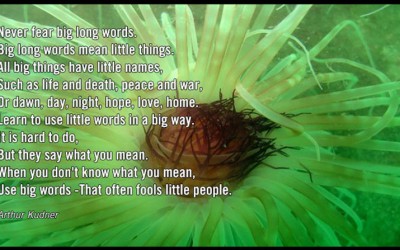I’m hovering. The tape measure is to my left and I’m trying to hold the blue transect square still for the diver above me who is snapping photos at each alternating meter. My buoyancy is still far from great, but after a week of practice the stillness feels more natural.
Once we dry off and get back to the lab we download the photos from the dive and start analyzing them to get biodiversity approximations of the selected 150 meters in Mae Haad, a bay by the CORE Sea station. Where once a vibrant reef flourished, these days the bay is dominated by dead coral and algae. Spectacular parrotfish and brilliant anemones still litter the ocean floor, but they are much fewer and farther between than in the bustling dive sites away from the coast. The data crunching can feel a little tedious at times and the results a little frustrating. Within the first week of my internship I had to ask: why are we doing it?
That question was my introduction to CORE Sea’s biggest and most important project, referred to as ‘Not All Hope Is Gone.’ The marine ecosystem in the Gulf of Thailand is worsening each year as fishing, climate change, and tourism continue to escalate. ‘Not All Hope Is Gone’ is CORE’s long-term plan to protect the Gulf through the community-driven establishment of a Marine Protected Area (MPA).
Establishing a space as an MPA is one of the most effective ways to conserve it. But, it is not as simple as circling it on a map or gathering the testimonials of local people. Anyone on Koh Pa Ngan for the last 15 years could tell you the marine ecosystem is on a downward spiral, but to turn such a massive area into an effective MPA it takes community engagement and cold, hard proof of the situation’s direness. That is what CORE Sea is working on. We are trying to track the changes in the Gulf of Thailand with sound science. Each project, collaboration, and thesis is a step along that path.
After an academic career tracking policy, my time here at CORE Sea taught me what the foundation of good environmental policy is: science. In the Gulf of Thailand it’s plain to see the need for heightened marine protection, but it must be proved with science before the policy is enacted.
Now what seemed mundane feels like it’s on the cutting edge. Doing a biodiversity transect feels more satisfying than getting an A on a university test or exceeding at work. My time here at CORE hasn’t just been about becoming a better diver and marine researcher, but rather about being part of a larger vision to protect a beautiful spot on the map. It is scary to think about what the beauties of the Gulf will look like if no one steps in, but it’s important to remember that not all hope is gone.
Buy cool Apparel
Support us, buy cool stuff
Join the team
make a difference
Learn more
About the Oceans

Julianna Renzi
Author
Julianna is studying environmental sciences and economics at the University of Arizona, USA. She writes opinion pieces and specializes in soil and marine systems.
Browse other Articles
About the state of health of the Gulf of Thailand (4)
Ines Stuhldreier (MSc, PhD candidate) In 2012 I had the pleasure to spend 4 months on the beautiful island Koh Phangan in the Gulf of Thailand, to enjoy the stunning under-water-world, hang out on tropical beaches, meet awesome people, eat looooots of good Thai food,...
About the state of health of the Gulf of Thailand (3)
As part of my diploma thesis, I joined the CORE-SEA-Team from February to May 2011. Rapidly increasing tourist numbers in the area of the lower Gulf of Thailand, accompanied with water pollution, overexploitation of marine resources and disturbances by dive...
About the state of health of the Gulf of Thailand (2)
Hauke Schwieder, Leibniz Center for Tropical Marine Ecology (2011, edited in 2014) In "little" Words A lot of nutrients can be bad for slow growing corals. Their "arch-enemy", algae, love it and they use it to grow even faster than usual. Like weeds in your garden...
About the state of health of the Gulf of Thailand
The state of eutrophication and overfishing in the Samui Archipelago, lower Gulf of Thailand Eike Schoenig1, Hauke Schwieder2, Susanne Pusch2, Panthanee Pengsakghun3, Kai Vetter4, Emma Shaw3 1: CORE sea, Thailand; 2: Leibniz Centre for Tropical Marine Ecology,...
Shifting Baselines
After we posted the article about the history of the Gulf of Thailand (read here), we were asked a couple of very good questions. The questions are quite fundamental and philosophical in nature, but let's see if we can get them sorted. When were there 100% living...
Welcome to the Gulf of Thailand
Welcome to the Gulf of Thailand, which covers roughly 320,000 square-km, connecting Thailand, Vietnam, Cambodia and Malaysia with the South China Sea, and ultimately the pacific ocean. You’ve come to visit a rather peculiar body of water. The Gulf is very young and...





